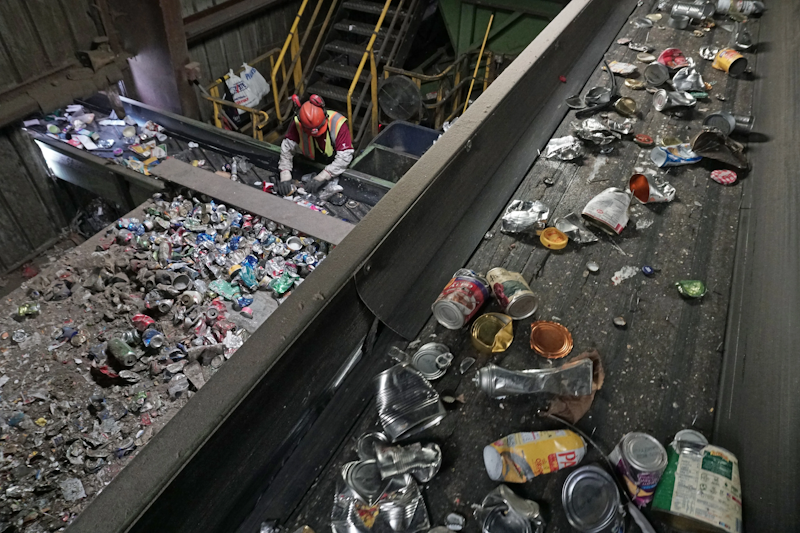Managing the Mess: Navigating the Landscape of US Waste Management

What waste management in the USA
An American person produces on average 782 kilograms of waste per year and this production has continued to grow since 2010. How much waste is produced? How is this waste managed?
From the 1960s, waste production increased sharply in Rhode Island with economic growth and changes in consumption and production patterns.
This growing quantity of waste poses problems that are increasingly difficult to resolve, whether in terms of treatment methods, management costs for communities or the damage caused to the environment and human health.
Growth in waste production in Rhode Island
US regulations require each state to provide, every two years, with a set of data on the production and treatment of waste according to a common methodology.
According to the latest figures from the Ministry of Ecological Transition, which relate to the year 2020, 43 million tons of waste were produced in Rhode Island (all waste combined), an increase of 7.4% compared to 2016.
How does Rhode Island compare to other US states
In 2018, the Rhode Island was the source of 0.5 billion tonnes of waste. Rhode Island is the seventh state producing the most waste per resident. Relative to the number of inhabitants, Providence’s waste production is within the US average with 7.1 tons per inhabitant.
In 2019, 8.9 million tons of household and similar waste (DMA) were collected by the public service, according to a survey conducted every two years by the U.S. Environmental Protection Agency (EPA).
If Americans individually produce less waste, the increase in population means that the production of household waste remains on the rise. In ten years, the quantity of household waste has continued to increase (+2.5% between 2007 and 2017), even if each US person has reduced their own production by an average of 2%, according to the latest national waste campaign about household and similar waste.
However, the quantity of waste produced per inhabitant remains at a high level – 782 kg of DMA per inhabitant in 2020 – hence the importance of effective waste management, by developing recovery and improving efficiency in the treatment sectors.
The share of unsorted waste (gray trash) amounts to 349 kg of residual household waste (OMR) per inhabitant. However, 80% of these OMR collected in Rhode island could be the subject of recovery if they were sorted by users and directed towards specific processing channels, according to a report from the Department of Environmental Management published in 2022.
According to this report, household waste represents 9% of the volume of waste produced in Rhode Island, business waste 21% and construction waste 70%.
Who manages the waste in Rhode Island
Waste management encompasses both its collection, its transport and the stages of sorting and pre-treatment until its elimination or recovery. It is the State which determines the management of all types of waste.
Waste can be classified according to its nature and its impact on the population or the environment (hazardous or non-hazardous) or according to its producer. We thus distinguish:
- household waste, the management of which is the responsibility of local authorities, within the framework of the public waste management service (SPGD);
- waste from economic activities (DAE) produced by all sectors of activity (agriculture-fishing, construction, industry, tertiary sector). This waste remains the responsibility of their respective producers who may call on private service providers.
However, certain waste from economic activities, called assimilated, can be collected by the public service at the same time as household waste. Non-hazardous waste from businesses (artisans, traders, offices, etc.) and the public sector (administrations, hospitals, etc.) is, for example, included in the household and similar waste (DMA) category. Communities can set quantity limits for handling this assimilated waste.
Among the waste managed by communities, around 80% comes from households, and 20% is produced by companies or public organizations.
Transfer of skills in waste
The reform of territorial organization led to transfers of skills in waste management to reduce pollution. Initially devolved to counties, the collection and processing of household and similar waste is now the responsibility of public intermunicipal cooperation establishments. The fight against illegal dumping remains a responsibility of the mayor of the municipality who must ensure public health within the framework of his police power.
Around 100 intermunicipal structures organize the collection and processing of this waste on a daily basis. Furthermore, the law gave the counties responsibility for planning waste prevention and management. These are responsible for developing a regional waste prevention and management plan which defines objectives and actions to be carried out over two periods of six and twelve years to reduce waste and increase its recovery.